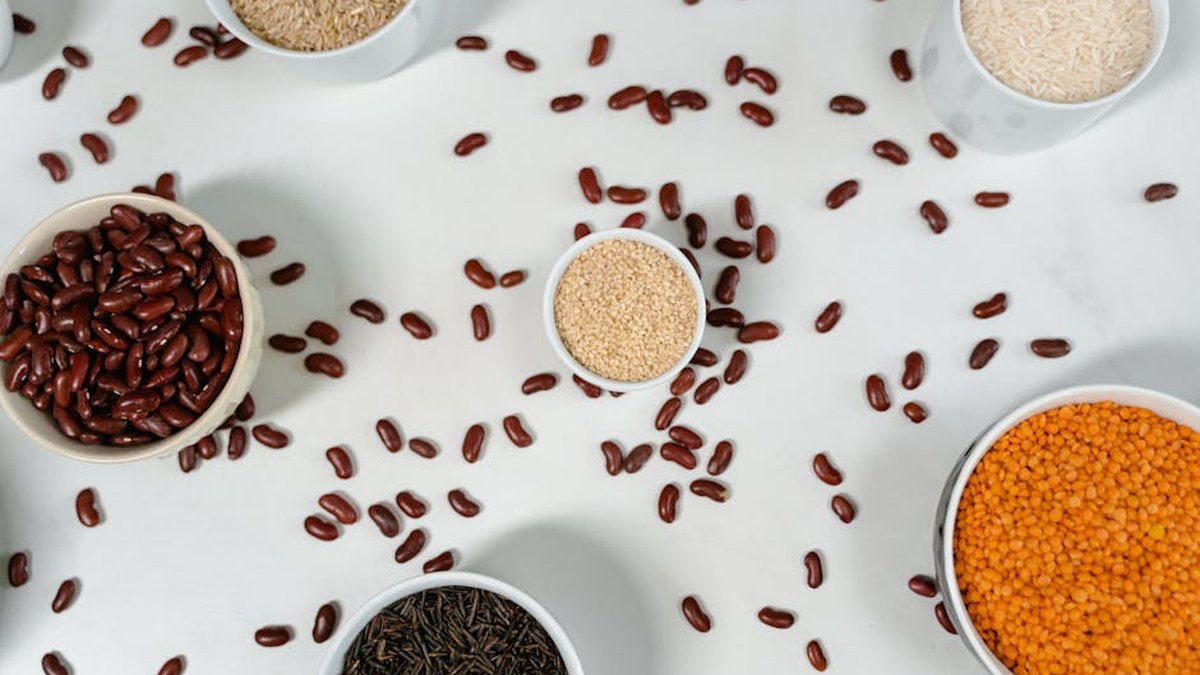The Ultimate Guide to Plant-Based Protein Sources
Are you looking to increase your protein intake but want to explore options beyond meat and dairy? You’ve come to the right place! Plant-based protein sources are not only incredibly versatile but also packed with essential nutrients, making them a fantastic addition to any diet. This guide will walk you through the best plant-based protein options, their benefits, and how to easily incorporate them into your daily meals.
Why Choose Plant-Based Protein?
There are numerous reasons to consider plant-based protein. For some, it’s an ethical choice aligned with vegan or vegetarian lifestyles. For others, it’s about the health benefits. Plant-based diets are often lower in saturated fat and cholesterol and higher in fiber, vitamins, and minerals. Even incorporating more plant-based proteins alongside animal sources can be a win-win for your health.
Health Benefits of Plant-Based Protein
- Reduced Risk of Heart Disease: Many plant-based proteins are low in saturated fat and cholesterol, contributing to better heart health.
- Improved Digestion: The high fiber content in plant-based foods promotes healthy digestion and gut health.
- Weight Management: Plant-based proteins can be filling and satisfying, helping you manage your weight more effectively.
- Rich in Nutrients: Plant-based foods are packed with vitamins, minerals, and antioxidants that support overall health.
Top Plant-Based Protein Sources
Here’s a comprehensive look at some of the best plant-based protein sources you can easily incorporate into your diet:
Legumes: A Protein Powerhouse
Legumes, including beans, lentils, and peas, are excellent sources of protein and fiber. They are also incredibly versatile and affordable.
- Lentils: About 18 grams of protein per cooked cup. Add them to soups, stews, or salads.
- Black Beans: Around 15 grams of protein per cooked cup. Perfect for tacos, burritos, or black bean burgers.
- Chickpeas: Approximately 15 grams of protein per cooked cup. Enjoy them in hummus, salads, or roasted as a snack.
- Kidney Beans: Roughly 13 grams of protein per cooked cup. Great in chili or bean salads.
- Edamame: (Soybeans) Offers about 18 grams of protein per cup. A tasty and convenient snack or side dish.
Nuts and Seeds: Small but Mighty
Nuts and seeds provide a good source of protein, healthy fats, and essential minerals. Enjoy them as snacks, toppings, or ingredients in your favorite recipes.
- Almonds: About 6 grams of protein per ounce. Enjoy them raw, roasted, or as almond butter.
- Chia Seeds: Around 5 grams of protein per ounce. Add them to smoothies, yogurt, or oatmeal for a protein and fiber boost.
- Hemp Seeds: Approximately 10 grams of protein per ounce. Sprinkle them on salads, yogurt, or add them to smoothies.
- Pumpkin Seeds: Roughly 7 grams of protein per ounce. A great crunchy snack or salad topping.
- Peanuts: (Technically a legume) About 7 grams of protein per ounce. Enjoy them roasted, salted, or as peanut butter.
Grains: Beyond Carbohydrates
While often thought of as primarily carbohydrates, certain grains offer a surprising amount of protein.
- Quinoa: About 8 grams of protein per cooked cup. A complete protein source, making it a great choice for vegetarians and vegans.
- Oats: Approximately 6 grams of protein per half cup (dry). Enjoy them in oatmeal, granola, or baked goods.
- Brown Rice: Roughly 5 grams of protein per cooked cup. A staple grain that can be used in a variety of dishes.
Soy Products: Versatile and Nutritious
Soy products are complete protein sources, meaning they contain all nine essential amino acids. They are a versatile addition to any plant-based diet.
- Tofu: Varies depending on firmness, but generally around 10-20 grams of protein per half cup. Use it in stir-fries, scrambles, or as a meat substitute.
- Tempeh: About 19 grams of protein per 3-ounce serving. A fermented soy product with a nutty flavor and firm texture.
- Edamame: (See Legumes)
- Soy Milk: Approximately 7-8 grams of protein per cup. A great alternative to dairy milk.
Vegetables: Surprisingly Protein-Rich
While not as concentrated as other sources, some vegetables can contribute to your daily protein intake.
- Spinach: About 5 grams of protein per cooked cup.
- Broccoli: Approximately 3 grams of protein per cup.
- Asparagus: Roughly 3 grams of protein per cup.
Tips for Incorporating Plant-Based Protein
Making the switch to more plant-based protein sources can be easier than you think! Here are a few tips to get you started:
- Start Small: Begin by incorporating one or two plant-based meals into your week.
- Experiment with Recipes: Explore new recipes that feature plant-based protein sources.
- Plan Ahead: Prepare meals and snacks in advance to ensure you have healthy options available.
- Read Labels: Pay attention to the protein content of packaged foods.
- Combine Sources: Combining different plant-based protein sources can help you get all the essential amino acids you need. For example, combining beans and rice provides a complete protein.
Conclusion
Plant-based protein sources offer a wealth of health benefits and culinary possibilities. By incorporating a variety of legumes, nuts, seeds, grains, soy products, and vegetables into your diet, you can easily meet your protein needs and enjoy a delicious, nutritious, and sustainable way of eating. Embrace the power of plants and discover a whole new world of flavor and well-being!






